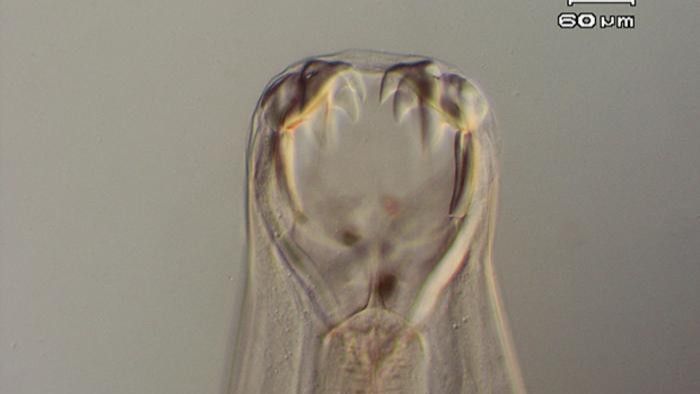Canine hookworms are becoming an increasing threat to pets and people, researchers say, after finding that the parasites have developed widespread drug resistance in both North America and Australia.
Researchers behind a new study found widespread resistance to benzimidazole-based dewormers in Australia, which are commonly used to treat dogs with parasites that can also spread to humans. The study, published Dec. 22, 2024 in the International Journal for Parasitology, builds on previous studies that identified widespread drug resistance in canine hookworms (Ancylostoma caninum) across North America.
Like in North America, the Australian parasites have developed genetic mutations, which give the hookworms resistance to treatments that would usually kill them.
“This is a big problem, as hookworm infections can be dangerous for both humans and animals,” study first author Swaid Abdullah, a senior lecturer in veterinary parasitology at the University of Queensland in Australia, said in a statement.
Canine hookworms cause anemia, diarrhea and malnutrition in dogs, which can be fatal. Infected dogs also leave hookworm eggs in their feces, which then hatch out into the environment and can spread to humans through skin contact.
“In people, hookworms from dogs can cause cutaneous larva migrans (CLM) disease — or ‘creeping eruption’ — which is a winding, snake-like rash with blisters and itching,” Abdullah said.
The disease usually goes away in a few weeks to months without treatment, but doctors may prescribe antiparasitic drugs to help kill the hookworms and antibiotics to treat infections, according to the CDC.
Antoinette Marsh, a professor of veterinary parasitology at The Ohio State University who wasn’t involved in the study, told Live Science that she wasn’t surprised by the new research in Australia because North America has the same problem.
“My biggest concern is cutaneous larva migrans that occurs in human beings,” Marsh said. “If people aren’t picking up the feces and [are] allowing it to develop in the environment, then it becomes a problem for us to actually treat humans.”
Related: Parasitic worms cause terrible diseases — could the viruses they carry be to blame?
How parasitic hookworms became drug-resistant
Scientists first reported drug-resistant canine hookworms in racing greyhounds in the 1980s and have since found them in different breeds in the U.S. and Canada. In the new study, researchers looked for genetic markers tied to benzimidazole resistance in hookworms sampled in Australia and New Zealand.
The scientists discovered that drug resistance was common in canine hookworms across Australia but wasn’t present in the New Zealand samples. They also found drug resistance in northern hookworms (Uncinaria stenocephala), which were previously believed to have no drug resistance, according to the statement.
Marsh noted that it’s unclear whether drug resistance in Australia evolved independently or spread between North America and Australia with the movement of pet dogs. Hookworms breed quickly, so they could have developed resistance independently in different regions.
“Occasionally, you’ll get a genetic change, and the ones that survive better are going to then take off in the population,” Marsh said.
The study authors called for a change in how deworming drugs are used, with a move towards targeted, risk-based treatment and ongoing monitoring to slow the spread of drug-resistant hookworms.
“As resistance spreads, we need ongoing monitoring and the development of new control strategies to protect animal and human health,” study co-author Dr. Jan Šlapeta, a professor of veterinary and molecular parasitology at the University of Sydney, said in the statement.
“This study is a wake-up call for both pet owners and veterinarians alike — the era of effortless parasite control may be coming to an end,” Šlapeta added.















